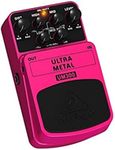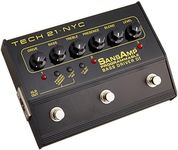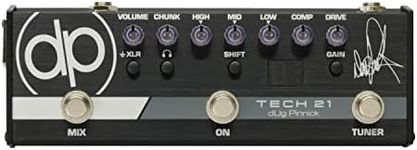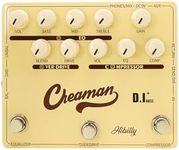Buying Guide for the Best Bass Distortion Pedals
Choosing the right bass distortion pedal can significantly enhance your sound and performance. A bass distortion pedal adds grit, growl, and sustain to your bass tone, making it more prominent in a mix. When selecting a bass distortion pedal, it's important to consider various specifications to ensure it meets your musical needs and preferences. Here are some key specs to consider and how to navigate them.Distortion TypeDistortion type refers to the kind of distortion effect the pedal produces. This can range from mild overdrive to heavy fuzz. Overdrive provides a subtle, warm distortion that enhances your natural tone, suitable for blues and rock. Fuzz offers a more aggressive, saturated sound, ideal for genres like metal and punk. Choose a distortion type based on the genre of music you play and the kind of sound you want to achieve.
Tone ControlTone control allows you to shape the frequency response of the distortion effect. This can include adjusting bass, mid, and treble frequencies. A pedal with versatile tone control lets you fine-tune your sound to fit different musical contexts. If you play in a band, you might want a pedal that allows you to cut through the mix by boosting mid frequencies. For solo playing, a balanced tone might be more desirable.
Gain RangeGain range determines the amount of distortion the pedal can produce. A wide gain range offers more flexibility, allowing you to switch from a clean boost to heavy distortion. If you need versatility for different songs or styles, look for a pedal with a broad gain range. If you have a specific sound in mind, a pedal with a narrower, focused gain range might be more suitable.
Bypass TypeBypass type refers to how the pedal handles your signal when it's turned off. True bypass means the signal passes through the pedal without any alteration, preserving your original tone. Buffered bypass can help maintain signal strength over long cable runs but may slightly color your tone. If you have a simple setup, true bypass might be preferable. For complex setups with many pedals, buffered bypass can help maintain signal integrity.
Power RequirementsPower requirements indicate how the pedal is powered, typically by a 9V battery or an external power supply. Some pedals may require higher voltage or specific power adapters. Consider your existing setup and whether you prefer the convenience of batteries or the reliability of an external power supply. Ensure the pedal's power requirements are compatible with your pedalboard.
Size and Build QualitySize and build quality affect the pedal's durability and how it fits into your pedalboard. A compact pedal saves space but may have fewer controls. A larger pedal might offer more features but take up more room. Build quality is crucial for longevity, especially if you gig frequently. Choose a pedal that balances size, features, and durability according to your needs and available space.






















